Found: The Lost History of Kempthorne's Pioneering Lighting Design in Australia
By stephen
June 8, 2016

Kempthorne were an Australian lighting and design icon. Here is our/their lost story.
In the early 1970s, Kempthorne had a lighting design office in Clayton, Victoria where they designed classic domestic and commercial luminaires, and for architectural lighting design projects including ANZ Towers, Museum Station, the High Court of Australia, and Collins Place.
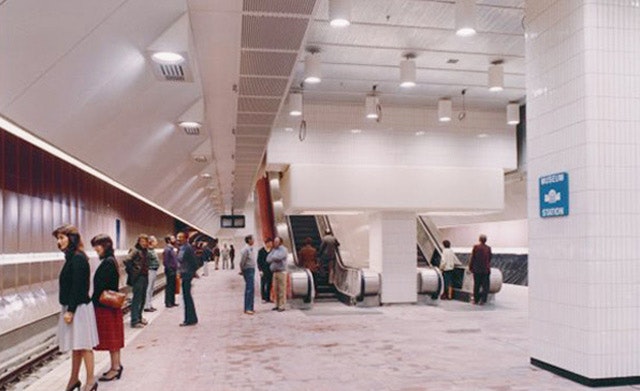
Museum Station 1980-82 Lighting by Kempthorne (Images NLA + Graeme Butler)
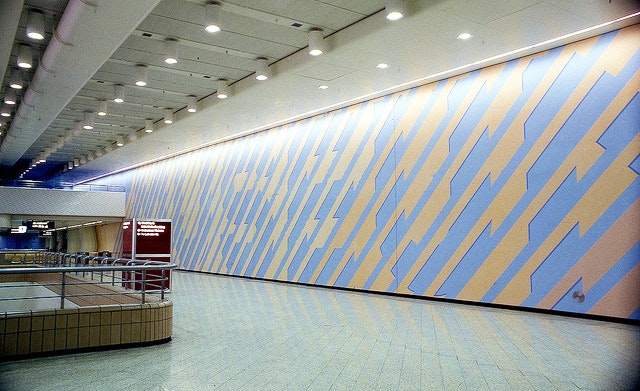
But behind the fancy output, flamboyant moustaches, Winfield Reds and prawn cocktails for lunch was also hard work at pioneering architectural lighting design. This process was forged under the direction of visionary and stalwart of lighting – Les Oberman.
Members of the Kempthorne team then included Tom McNair – chief industrial designer for domestic, Winston Justice (who went on to found ambience in 1987) – designer for architectural and commercial, and Malcolm Webster – domestic lighting design and industrial designer.
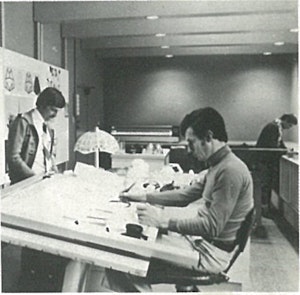
Malcolm Webster at the design table (circa 1978)
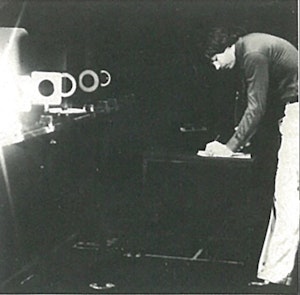
Winston Justice testing some light output (circa 1978)
HOW MANY CUSTOM FITTINGS?
Incredibly for many projects, things like tracklights, cans and downlights were original creations produced specifically for the project, with some projects featuring up to 100 custom fittings and ranges alone. A lot of commercial fixture design was done around what distribution of light was required.
Back then, computers didn’t even have Pac-Man yet. So to figure out reflector shapes, the team manually used complicated logarithm formulas. Once the reflector was finalised, the fitting and components were built around it. The aim was to always keep size to a minimum.
After the fitting was designed their very own model-making shop (how cool is that?) manufactured a prototype. This was to test the physical capabilities of the fitting and to ensure it was visually suitable. Depending on the material used this would then be passed on to the relevant production arm, for example, glass technologist Nathan Munz.
Most importantly the fitting had to be tested to ensure it met standards and achieved the right light output. At the time light testing was in its infancy. There was a testing laboratory at the State Electricity Commission lab run by Barry Foreman in Richmond and photometric testing was also available at the National Measurement Institute in NSW.
“But because we had so many fittings that needed to be produced and tested for lots of complex attributes we decided to build our own, and we had to build it big.”
Says Winston Justice, now Technical Director of ambience.
the kempthorne lab is born
John Dunstan was the electrical engineer tasked with creating something that hadn’t really been created before. At least, not on this scale. There were three distinct goals with the pioneering laboratory:
- Research Give birth to new designs and advancements in lighting
- Development Taking the fruits of the research and developing them into products
- Control Selected fittings are lab-tested to ensure adherence to specifications
Malcolm Webster also says that there was another purpose that some of the technicians used it “to lock co-workers in there for a practical joke”. Equipment from the Laboratory was sourced from Lichtmesstechnik GMBH in Berlin (a company that is still producing photometric equipment to this day). The testing procedure adopted was the British Standard for Testing of Indoor Luminaires.
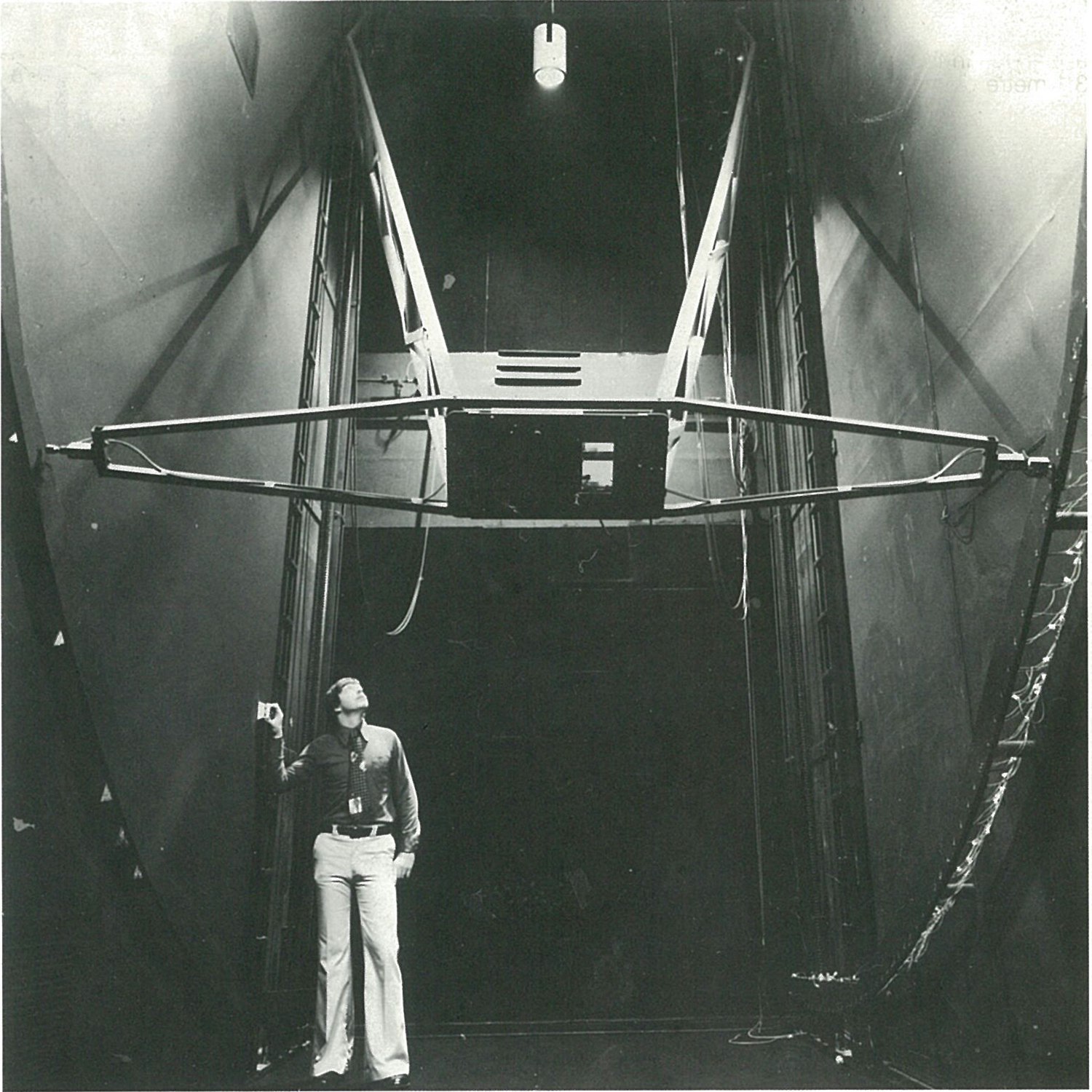
INSIDE THE LABORATORY – THE GINORMOUS PHOTOMETER
The swinging arm photometer was housed in a pitch-black room and was 20 feet long. The height could be adjusted depending on commercial or domestic application.
This was the largest photometer in the Southern Hemisphere (it should also be noted the flares Justice is wearing in the picture are also the largest recorded in both the Northern and Southern Hemispheres until this day).
The prototype light was fixed within a central housing that was able to be rotated 360°. The swinging arm moved to measure the light intensity at hundreds of different angles. Prototypes were tested and retested until they achieved the desired performance.


THAT’S NOT AN INTEGRATING SPHERE, THIS IS AN INTEGRATING SPHERE
The Integrating Sphere was basically a 3-metre sphere split in half. Its purpose is to measure the light output of fittings and the lumen output of specific lamps. From the readings, the efficiency of fixtures were calculated.
rising and lowering ceiling
After testing, fittings were installed within a ceiling that was able to rise seven metres, so they could evaluate the visuals and glare effects from the finished product. It was also just damn fun moving the thing up and down!
temperature testing facility
This was a still air chamber that was used to measure temperature rise on internal components after a subscribed period of time. All components were positioned and tested until they conformed to relevant standards.

And once this was all complete, the fittings were approved for use in projects or to be sold as a product line. All of the data was then published, but back then, they had to set out the documents on a special printing press as digital printing was not yet invented. But that’s another story.
The knowledge forged has been integral in developments, innovation and understanding of light that we at ambience and many more use today. Now, how about that prawn cocktail…?
These photos were from some of the ambience staff archives, and just a small piece of the wonderful lighting & design history of Australia. We’ll also be showcasing other stories in the future. If you have something to add or say, we’d love to hear it.
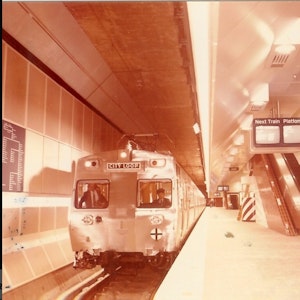
CONTACT US
(03) 9403 6400